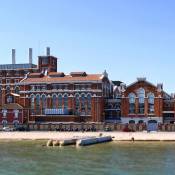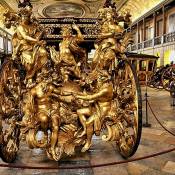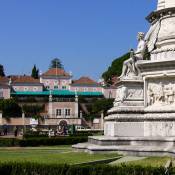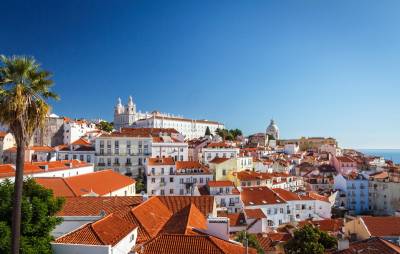Standing at over 110 metres tall on the opposite bank of the Tejo to Lisbon is Cristo Rei. Built between 1949-59 the statue was inspired by the Christ the Redeemer statue in Rio de Janeiro.
The statue of Cristo Rei (Christ the King) with his arms outstretched dominates the skyline of the far bank of the river from Lisbon. From the city it is hard to grasp quite how big this statue is, but it is huge. Set atop a 82m (270ft) plinth the figure of Christ measures nearly 30 metres (100ft) in height. This makes it marginally smaller than the Christ the Redeemer statue in Rio de Janeiro and there is no denying the obvious influences.
The pedestal upon which the figure stands is fairly impressive in its own right. It consists of four arches with the Chapel of Nossa Senhora da Paz (Our Lady of Peace) in the centre. Two of the mighty legs of the pedestal contain an elevator system which takes visitors up to the viewing platform at Christ's feet. This is around 80 metres (260ft) up and combined with the elevated cliff top position provides a great vantage point overlooking Lisbon.
Cristo Rei was completed in 1959, seven years after work began. However, it was envisaged somewhat earlier. The initial inspiration was after the Cardinal Patriarch of Lisbon had visited Rio de Janeiro in 1934 and had seen the new Christ the Redeemer monument there. Ultimately though the monument was built to give thanks to God for largely sparing Portugal the devastation of World War II.
Now-a-days there is a large visitor centre constructed next to the statue.
Taking the Cacilhas ferry from Cais do Sodre in Lisbon is probably the most straight forward way to get to Cristo Rei. From the riverside there is a huge elevador (lift) that rises vertically up the cliff side to the site - this is fine if you don't mind heights, but I'd take the walk up the hill!










